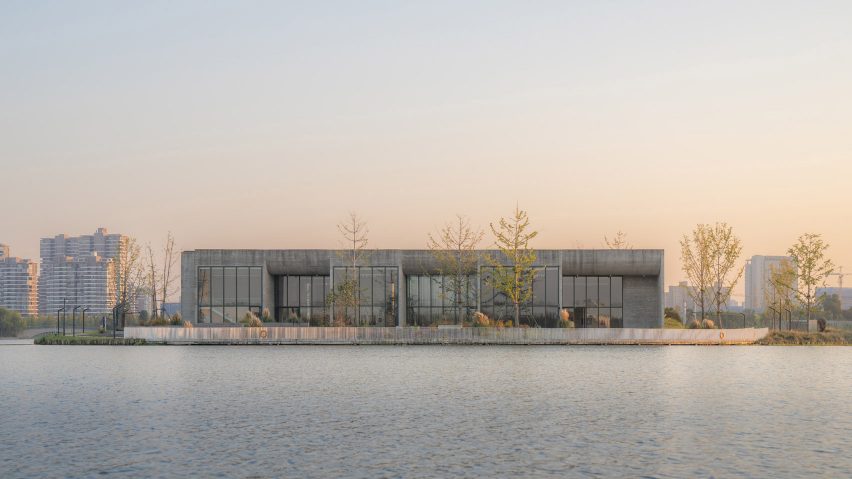
MORE Architecture creates Ginkgo Gallery as "antidote to the museum boom" in China
Dutch studio MORE Architecture has completed a concrete museum on an island in a manmade lake in Jiaxing, China.
Named Ginkgo Gallery after the ginkgo trees that cover the island, the contemporary art museum comprises exhibition rooms, an auditorium, a reading room and a workshop space.
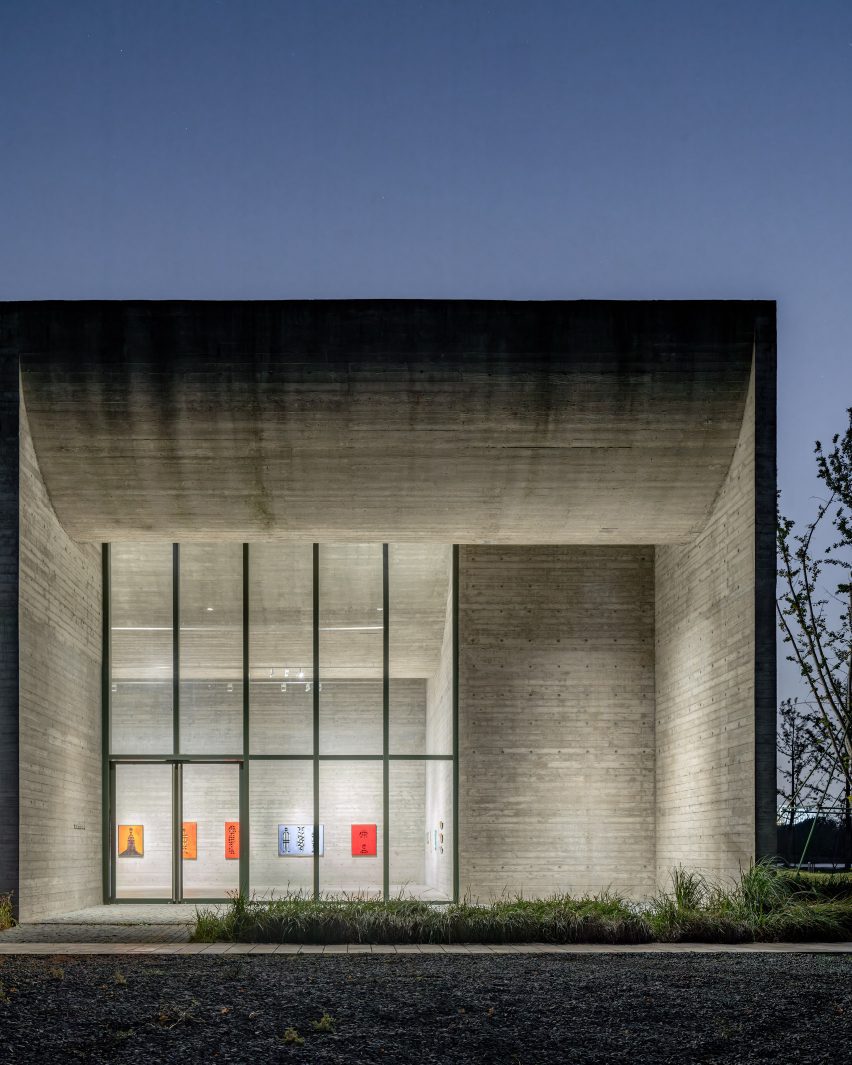
Designed as a small-scale museum and constructed with a minimalist use of materials, the 1,500-square-metre Gingko Gallery was intended to be different from the larger-scale museums that have often defined the past decade of the "museum boom" in China.
"Ginkgo Gallery is the antidote to the 'museum boom' phenomenon – a humble, intricate museum where art and nature merge into one immersive experience," MORE Architecture said.
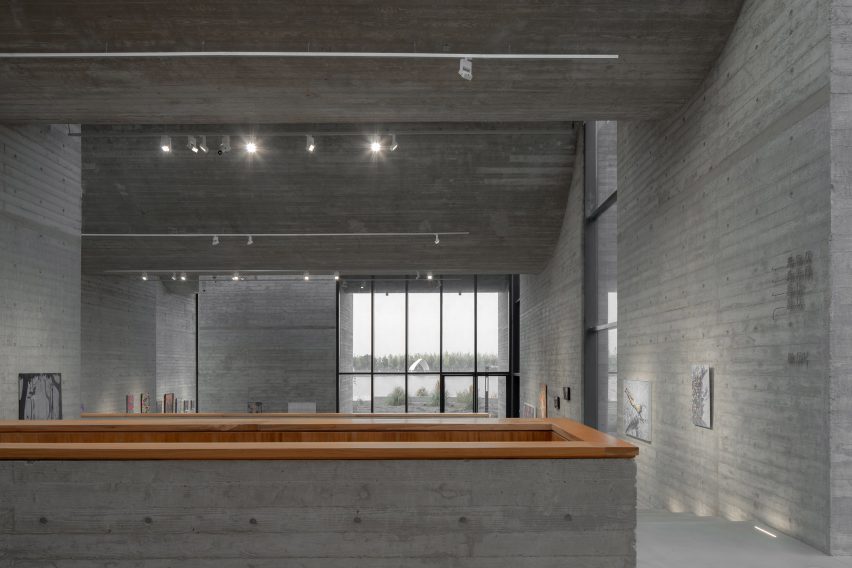
Located on an island in a manmade lake in Jiaxing, eastern China, the museum design was informed by the typical layout of local villages.
By combining a free-flowing design plan with more traditional routed museum layouts, the studio aimed to both open up the curatorial possibilities and improve the visitor experience.
"The DNA of the typical Zhejiang village, with its small scale and sophisticated network of spaces that differ in size, is the true inspiration for this museum," said MORE Architecture.
"The museum invites visitors to wander through and discover the different sections as if they were exploring a small town, creating a floorplan with 'fluid spaces', merging two traditional museum typologies – the conventional 'guided' routing and the 'free flow' plan – into one museum," it added.
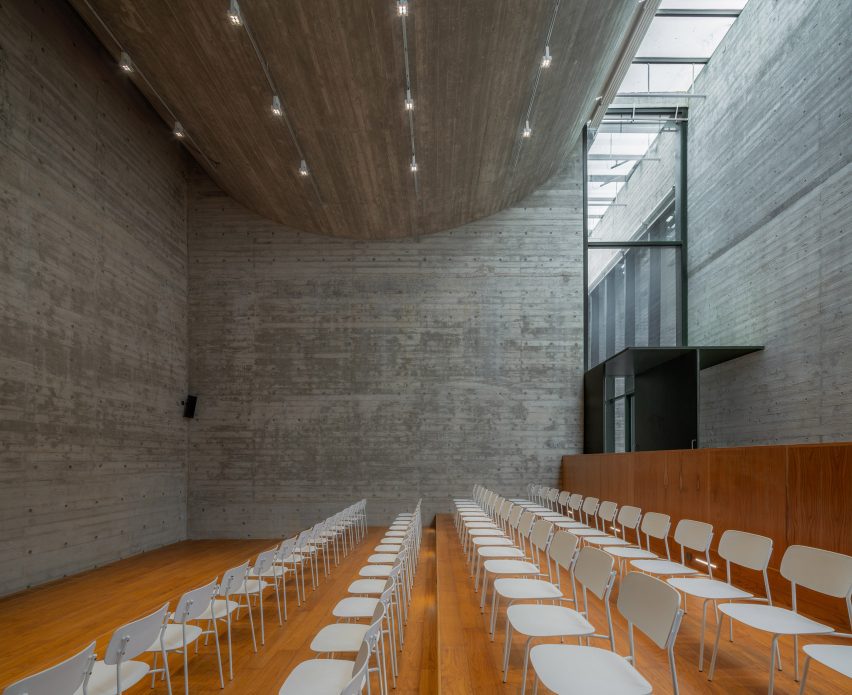
The result is a building comprised of connected museum halls, located under curved concrete slabs that span up to 17 metres.
MORE Architecture used board-marked concrete, arranged in a horizontal pattern, for the entire building, creating a unique pattern and texture on its facades and ceiling.
On its front and back facades, green aluminium mullions frame full-height windows that contrast the roughness of the concrete.
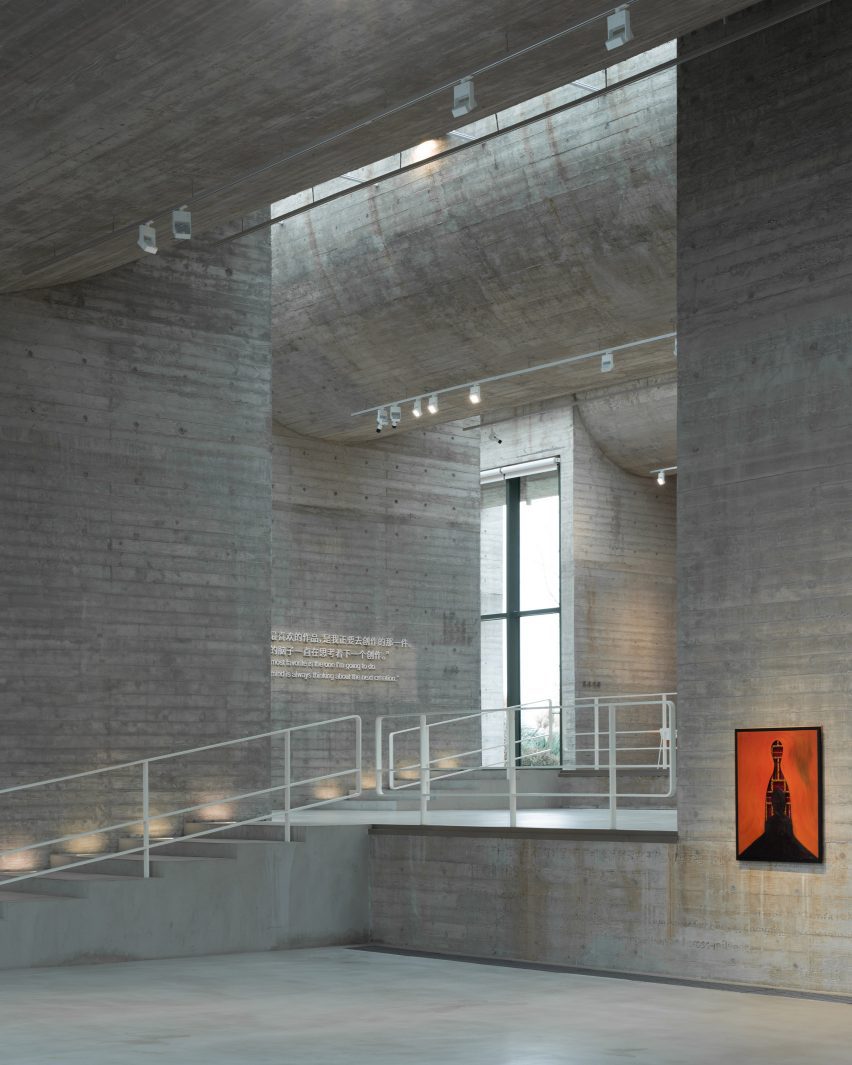
"It became clear that a modest museum design also required a modest use of materials," the studio explained.
"So, we decided to focus on the spatial quality of the museum, and limit the number of materials, and therefore transport movements, construction waste, packaging and so on."
Ginkgo Gallery's exhibition halls increase in both size and height from the south side of the museum towards the north, inviting views of the surrounding landscape and letting in plenty of natural light on the northern side.
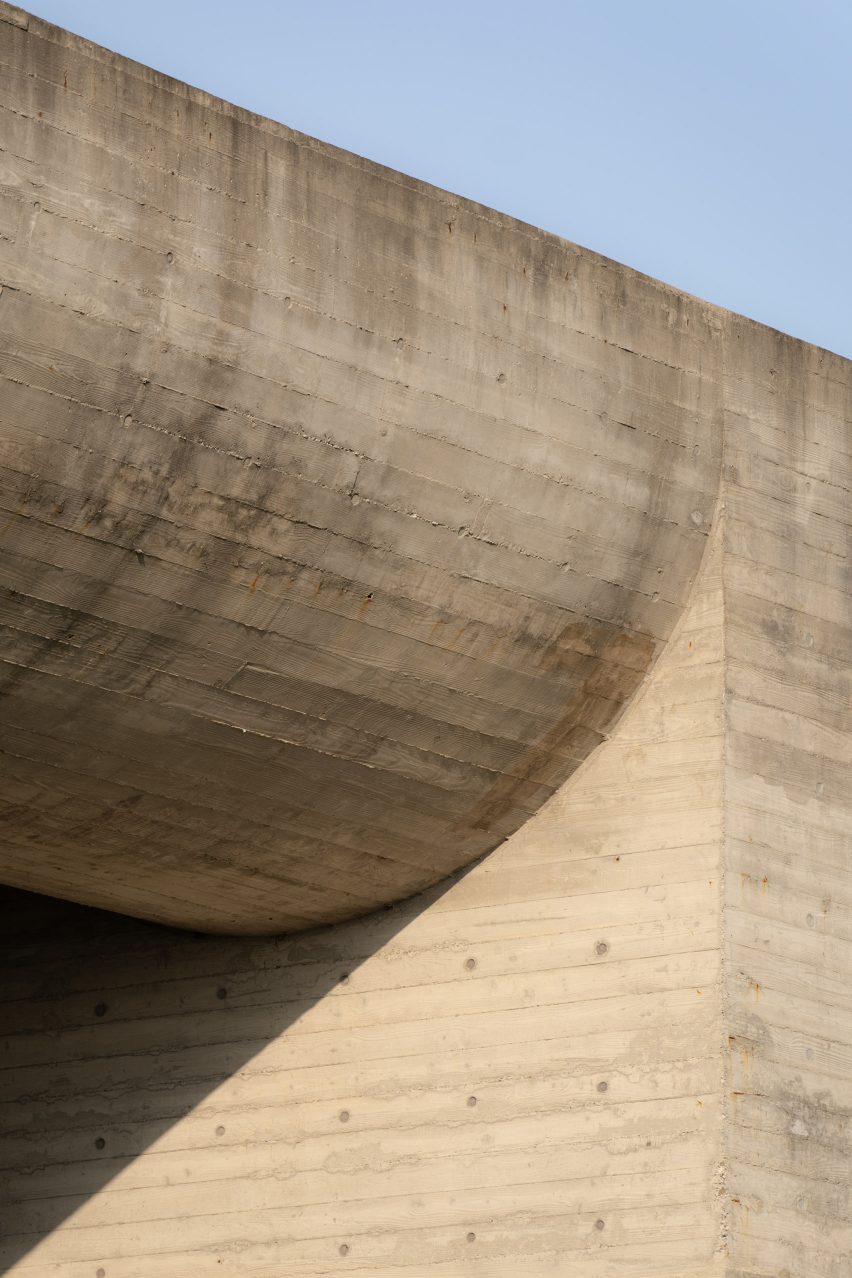
Meandering walking paths allow visitors to explore the rest of the island, which can also be used for outdoor exhibitions.
Working internationally with its team based in Amsterdam and Shanghai, MORE Architecture also designed the Floating Hotel featuring a continuous zigzagging roof, as well as a fortress-like clubhouse complex, both in China.
The photography is by Kris Provoost.
Project credits:
Design lead: Daan Roggeveen
Design team: Robert Chen, Lina Peng, Pedro Martins, Emilio Wang, Mengyao Han, Anna Clement, Mae Szeto, Jeffrey Kuo
Structure/MEP/HVAC: 9LEON, Jiaxing
Contractor: Zhejiang Zhongcheng Construction Engineering Group
Facade: Shanghai Meite curtain wall Co Ltd